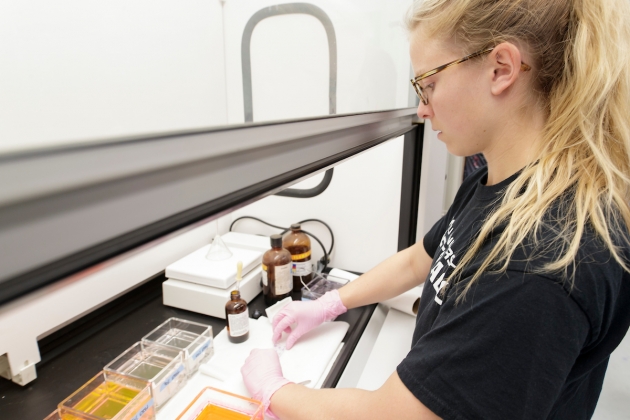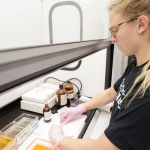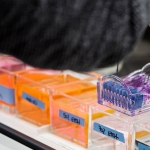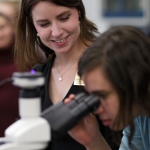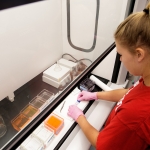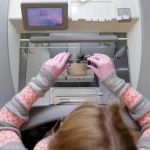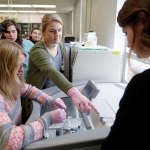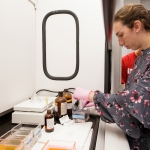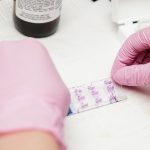Slice of Life: Brenau Makes its Mark in Stem Cell Research
Heather Ross is Brenau’s resident expert on neuroregeneration and neural injury. For years, she has been working on stem cell and rehabilitation research that is instrumental to her students and the field of research. Now partnered with certified cytotechnologist Jessi Shrout on a study of stem cells in rat brains, Ross is continuing a five-year trend at Brenau to expose Women’s College students to the wonder and possibility of neurological rehabilitation.
As the world pushes to undo a trend of few women in STEM – science, technology, engineering and mathematics – Brenau University is continuing its own trend of exposing its female students to cutting-edge STEM research and education.
On the Gainesville campus, tucked away on the second floor of the old, red-brick Science Building is a high-tech facility where a dozen female students and faculty members are doing some of the most important and controversial work in their industry today: stem cell research.
Heather Ross, associate professor of physical therapy, stands across a table littered with tools and equipment from Jessi Shrout, assistant professor of biology, health science coordinator and lab director. The two call measurements to each other as they pour liquids into vials and trays, while a gaggle of students hovers excitedly nearby.
And they should be excited. Shrout handpicked the students – all undergraduates in the Women’s College – for this study began by Ross years ago at the University of Florida.
“My work has historically dealt with stem cells, which have a lot of capacity to heal in our bodies,” says Ross. “They’ve been discovered and worked with for several decades now. My job is to study them in the brain and in the spinal cord after injuries.”
To do this, Ross, Jessi Shrout and their students are handling rat brains that have been frozen and preserved from a prior study done by Ross. “I had some rats that were given a stroke and a stem cell transplant into the brain to see if it could be helpful in repairing brain tissue and subsequent function,” Ross says.
Some of the animals also received a therapy Ross calls intermittent hypoxia, or oscillating oxygen levels, as a stimulus to perhaps make the stem cells “work better,” as she puts it. In order to understand that, they have to peer inside the brain and see what’s happened. That’s where Shrout and her undergraduate students come in.
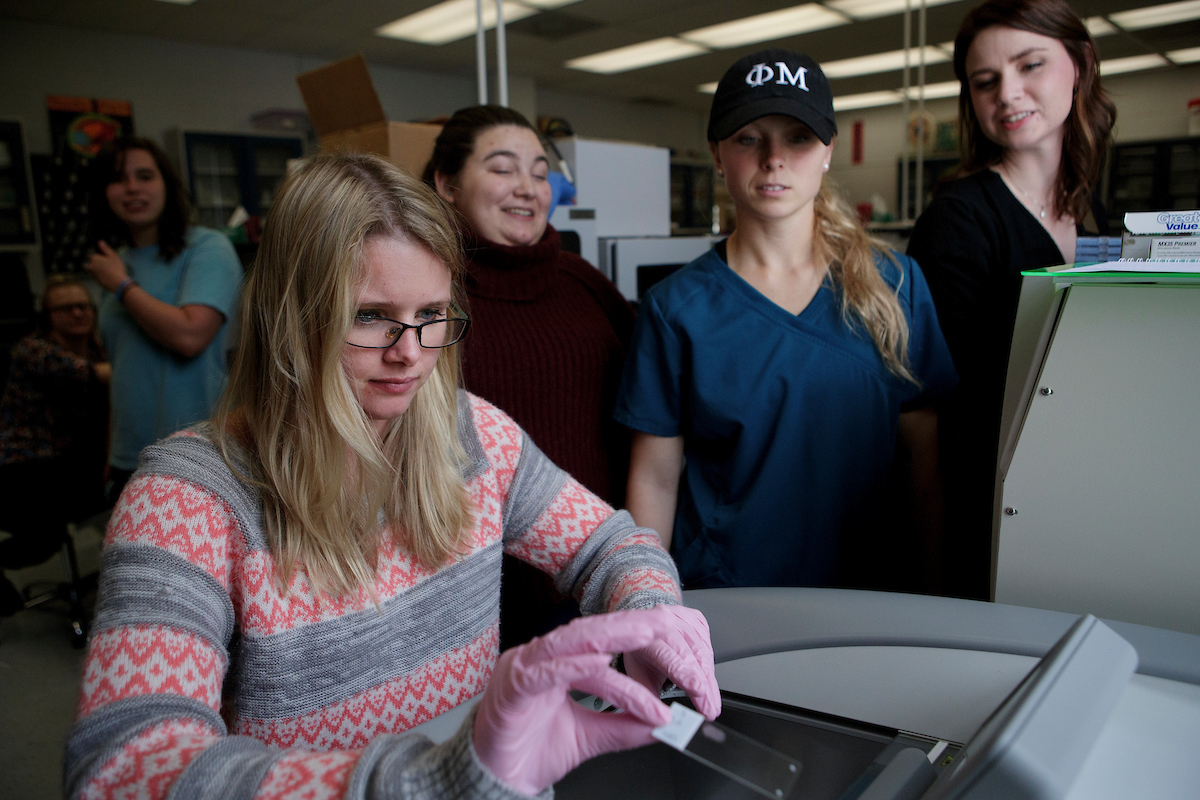
The study
To start, they use a machine called a cryostat, or a freezing microtome.
“It is essentially a very cold, very precise meat slicer, like at the deli,” Shrout says. “But it allows us to cut our tissue at very, very specific sizes. We can adjust the thickness to what we generally cut, which is five microns thick.” How thick is that, exactly? One micron is one one-thousandth of a millimeter.
Lauren Sanders, senior from Maysville, Georgia, says using the cryostat has been her favorite part of the study. “We have what looks like a hockey puck with the rat brains on it,” she says. “We just crank it, and it has a very, very fine blade that runs across it.”
“As students, we get to be in charge of slicing the brains and putting them on slides,” says Emma Jaczko, a junior from Peachtree City, Georgia. “We then stain the slides so they can properly analyzed.”
Taylor Bennett, junior biology major from Dawsonville, Georgia, says while the cryostat can be finicky and requires meticulousness, using it is an invaluable experience. “I enjoy the hands-on work,” she says, “and knowing what we’re doing will be instrumental in further research that could have a huge impact.”
Ross says the students are preparing the brains for tissue morphology studies to look at the stroke lesions and markers. “We want to see if we can find any stem cells that lived from this experiment,’” she says. “And if so, did they express any proteins that might tell us any more about what they did in that injured brain? Did the hypoxia help any of that, or not?’”
Shrout compares the process for her students to meat slicing and Easter egg dyeing. More than 500 individual specimen slides, each with six or more slices of brain, have been prepared by Shrout and the students. Each one is hand-labeled, so Ross and her team will know exactly what part of the brain they’re looking at in each specimen.
Once the slides are prepared, the students load them carefully into trays to stain them according to Ross’ specific instruction. The process is timed – each tray is dunked in the first stain for five minutes, rinsed once, rinsed again, then dipped in a bluing reagent. It is then rinsed twice again, dipped in ethanol, then in an eosin solution for three minutes, before three rounds of rinsing and exactly seven dips in xylene.
As the students wait, timing the first five minutes, Ross warns, “This part is kind of like watching paint dry,” to which Sarah Frey, senior from Lawrenceville, Georgia, genuinely responds, “It’s so exciting.”
Ross has done animal work in the past, but Brenau has never done animal research before. That deterred neither Ross nor the university, however, and she brought several of her ongoing projects with her from the University of Florida.
“Now I’m looking at the cells themselves,” she says. “We have a nice cell laboratory here at Brenau, where I can set up cell studies in vitro, and do some of these studies with institutions that have research animals, collaborate with them and pass on some of the things that we understand about stem cells so they can perhaps translate them into animal models.”
The project was first funded by a Foundation for Physical Therapy grant, which Ross was awarded at the University of Florida. Then the foundation allowed her to bring it to Brenau. Today, the funding time is over, but the team already has the purchased materials and is now finishing up the work, with the help of some funding from the Department of Math and Science at Brenau.
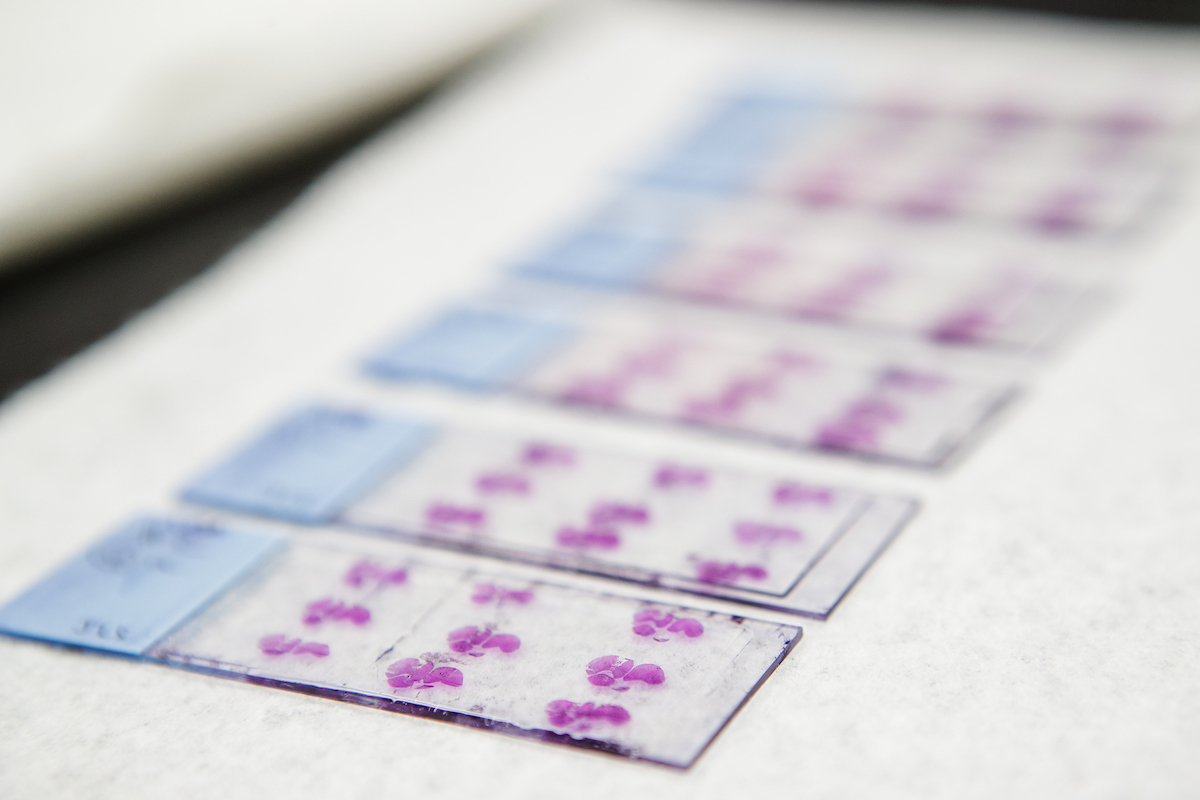
The applications
Brenau first dipped its toe in spinal cord rehabilitation five years ago, when the School of Occupational Therapy partnered with the Shepherd Center, an Atlanta rehabilitation hospital primarily for patients with spinal cord and brain injuries. That partnership brought Brenau students together with Shepherd Center patients who volunteered their time and wisdom to help these occupational therapists gain practical experience that they could never get in a classroom.
The potential for this new research, however, goes significantly deeper.
“Lots of people are doing stem cell research,” Ross says. “You hear about it in the news, but we don’t understand how exactly it all works.”
Ross says the world still has a lot to learn before it utilizes stem cells to their full potential. “I don’t think we’re there. So these studies are designed to provide background information for future application.”
On the front end, the research applications are in therapeutics, or therapy technology. But Ross thinks the research could go further, particularly that of intermittent hypoxia. “I’m very interested in applying it in animal models or just in individuals who have had a neural injury – but not necessarily stem cell transplant,” she says. “I work with clients in the Brenau Rehabilitation Practice, and we are trying to apply these principles of activity in improved neural outcomes. I like to apply those themes right now for those clients, to make our best efforts to improve neural functions.”
In the meantime, the study means invaluable experience for Women’s College students.
“I’ve been involved in a lot of research, but this is bigger than all the other research I’ve done,” says Mason Garland, senior biology major from Hoschton, Georgia. “It has more impactful possible results. Basically, we are trying to find ways to treat the stroke the rats were induced with. Think about all the different ways this could help stroke patients – that’s what I want to do. I want to be a medical doctor.”
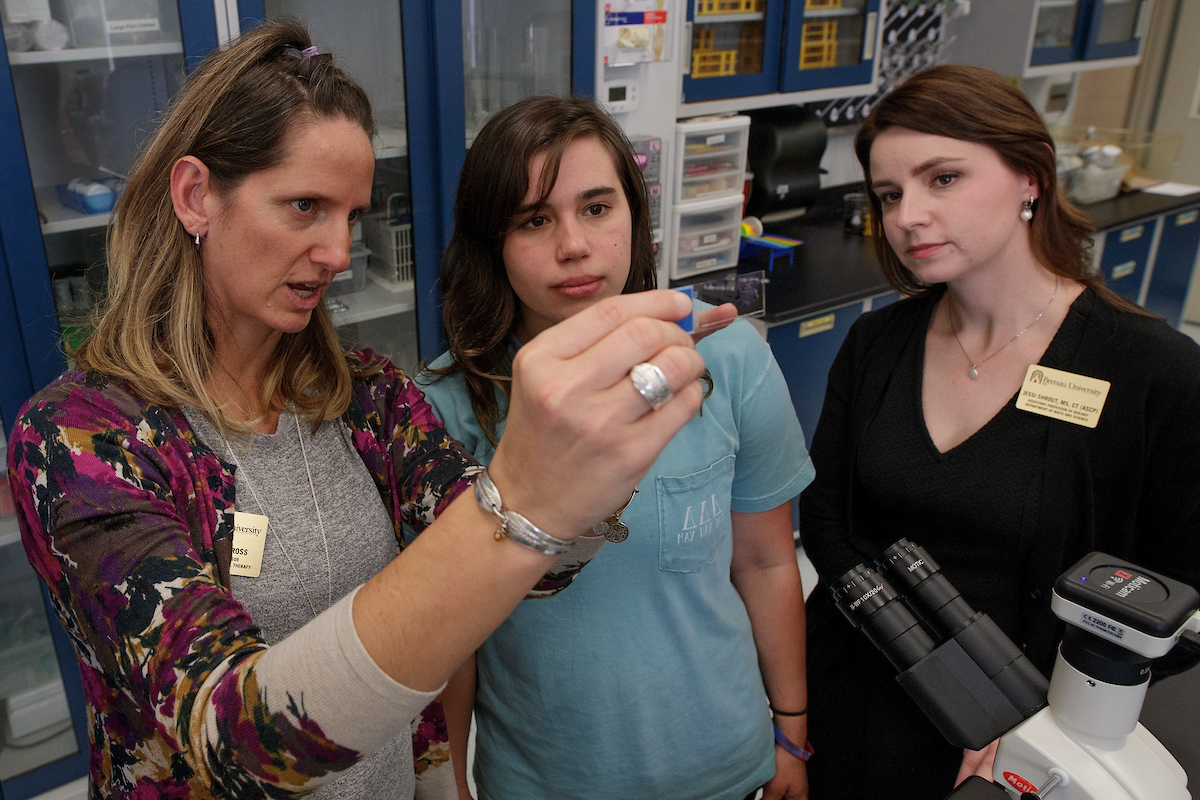
Not only does Shrout have seven female undergraduate students working in the lab with her, but Ross has two doctorate of physical therapy students – one male and one female – who work with the undergraduate students about once a week.
This is an important part of the model, according to Ross, as it provides exposure for undergraduates to the expertise of doctoral-level students. “Ultimately we would like to try and get federal funding for a really unique grant opportunity that would allow us to train undergraduates in a supported way and support our research project at the same time,” Ross says. “I think we have the right recipe to have a shot at that funding at our small university.”
Shrout says at a big research school undergraduate students would probably have this opportunity. “But for a small liberal arts college – especially a women’s college – I think this is pretty rare,” she says. “I handpicked the students I have in here, and there are many more who want the opportunity. I’ve had to be really picky with who we chose, and we focused on the students who can truly use this research experience to get them into graduate programs.”
A 2015 study by the National Science Foundation found only 28 percent of all science and engineering positions in the United States are held by women – a low percentage but a big increase from only five years earlier. These Brenau women are facing prejudice in their future workplaces, but this experience should give them a leg up as they apply to graduate schools.
According to Ross, whether they are coming from a big school or a small one, having a hands-on experience leaves students far more competitive for graduate school placement, be it medical, dental, pharmacy or physical therapy school. “It elevates their application status,” Ross says.
Once the students have properly stained the specimen, Shrout demonstrates how to apply a coverslip, which she says is meticulous work but will “preserve them forever.”
The students queue around Shrout, Garland literally bouncing on her toes and Bennett leaning forward for a better view.
The end result shows a perfect, clear slide with violently violet shapes that look more like pressed flowers than the bits of brain they really are.
When asked their favorite part of the lab thus far, the students all have the same answer: anything hands-on. Finally, as Shrout sets down her covered specimen – which has to dry for at least 24 hours – she says the words everyone has been waiting to hear: “Who wants to try it?”
- Mason Garland works to place a cover slip on a slide. (AJ Reynolds/Brenau University)
- Sarah Frey works to stain a set of samples. (AJ Reynolds/Brenau University)
- Jessi Shrout instructs as Sarah Frey looks through a microscope. (AJ Reynolds/Brenau University)
- Taylor Carpenter works to place a cover slip on a slide. (AJ Reynolds/Brenau University)
- Savannah Blalock cuts slices of rat brains. (AJ Reynolds/Brenau University)
- Taylor Bennett makes an observation as Savannah Blalock cuts thin slices of rat brains. (AJ Reynolds/Brenau University)
- Lauren Sanders works to place a cover slip on a slide. (AJ Reynolds/Brenau University)
- A student works to place a cover slip on a sample. (AJ Reynolds/Brenau University)
